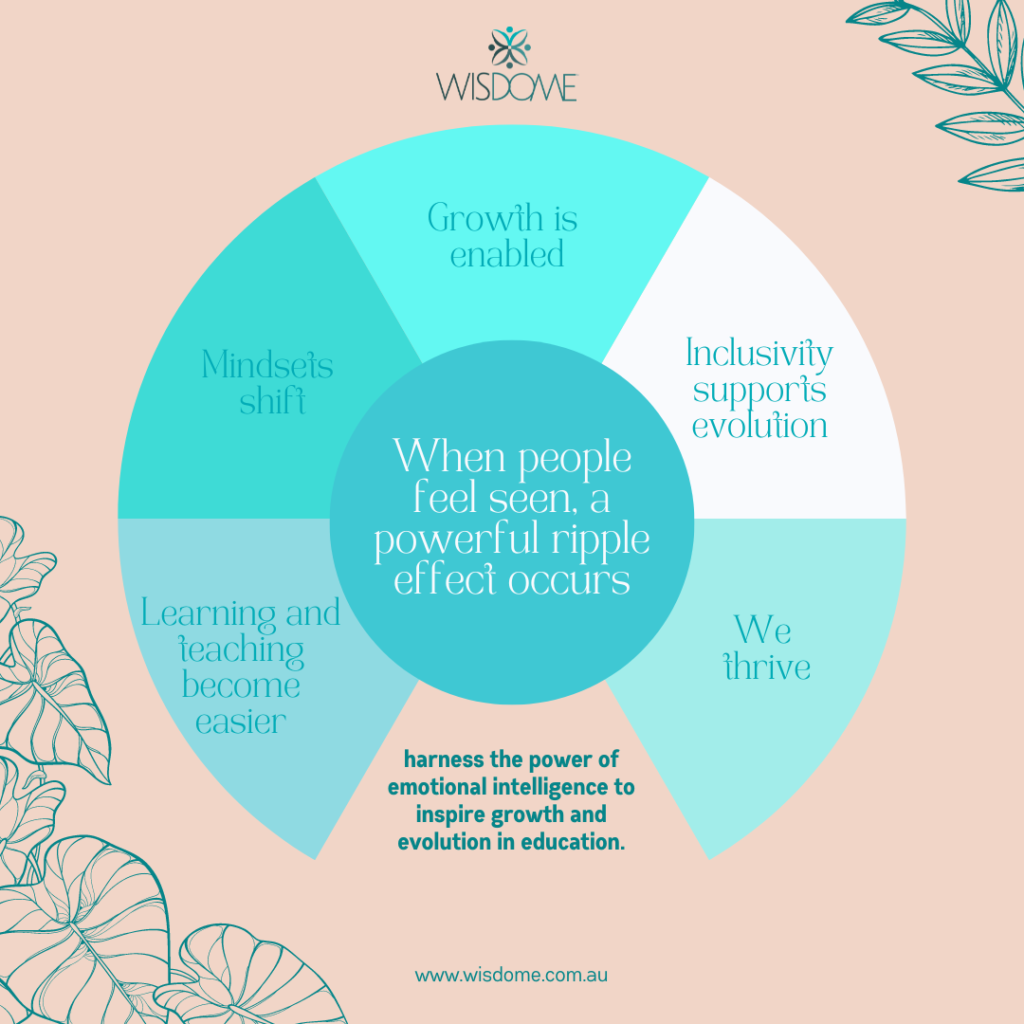
The Impact of Harnessing Emotional Intelligence in eLearning
In this week’s blog, we dive into emotional intelligence (EI) after celebrating World EI Day on June 6. Emotional intelligence is a crucial element in creating effective and supportive learning environments, especially in online education. By integrating EI into teaching strategies, we can make online learning more inclusive, engaging, and enriching for both educators and learners.
What is Emotional Intelligence?
Emotional intelligence is the ability to recognise, understand, manage, and use emotions effectively. It involves key components such as self-awareness, self-regulation, motivation, empathy, and social skills. In the context of online learning, EI can significantly enhance the educational experience by fostering a positive, inclusive environment that supports both teaching and learning.
The Benefits of Emotional Intelligence in Online Learning
Building Meaningful Connections
- Empathy and Understanding: Recognising and empathising with learners’ feelings and experiences fosters a sense of connection and trust. This creates a more engaging and supportive environment. For example, acknowledging a student’s frustration with a difficult concept can help build rapport and encourage perseverance.
- Personalised Interaction: Responding to individual needs and emotions helps learners feel valued and understood, enhancing their commitment and participation. Customising feedback and recognising individual achievements can boost learner motivation and engagement.
Enhancing Communication
- Effective Feedback: Providing constructive feedback that is empathetic and supportive encourages learners to improve without feeling discouraged. For instance, instead of simply pointing out errors, teachers can frame feedback positively, suggesting ways to improve and acknowledging the effort put in.
- Clear and Compassionate Messaging: Using language that is clear, positive, and empathetic helps convey information more effectively and maintain a positive learning atmosphere. This includes being mindful of tone and phrasing in written and verbal communication to avoid misunderstandings and foster a supportive environment.
Fostering a Positive Learning Environment
- Inclusive Atmosphere: An environment that acknowledges and supports the emotional needs of learners promotes a sense of belonging and motivation. Inclusivity can be fostered by celebrating diversity, encouraging participation, and making sure all voices are heard.
- Reduced Anxiety: Addressing emotional well-being can help reduce anxiety and stress, making learning more enjoyable and effective. Techniques such as mindfulness exercises and stress management workshops can be integrated into the curriculum to support learners’ mental health.
Promoting Personal and Collective Growth
- Mindset Shifts: When learners feel seen and valued, it encourages a positive mindset, fostering confidence and a willingness to participate actively. Positive reinforcement and growth mindset principles can help students view challenges as opportunities for learning.
- Empowered Learners: Recognising each person’s unique contributions leads to personal and collective growth, paving the way for continuous improvement. Encouraging self-reflection and peer feedback can help students recognise their strengths and areas for growth.
How Should Teachers Harness Emotional Intelligence?
Teachers can harness emotional intelligence by:
- Practising Self-Awareness: Understanding their own emotions and how these impact their teaching. Reflecting on one’s emotional state before engaging with students can help manage stress and maintain a positive classroom atmosphere.
- Developing Empathy: Recognising and valuing the emotions of their students to build stronger connections. This can involve active listening, showing genuine interest in students’ lives, and being responsive to their needs.
- Enhancing Communication: Using clear, compassionate, and constructive language. Teachers should strive to communicate expectations and feedback in a way that is supportive and encouraging.
- Promoting Emotional Regulation: Helping students manage their emotions to create a conducive learning environment. Teaching coping strategies and providing a safe space for students to express their feelings can support emotional regulation.
The Ripple Effect: Benefits of Emotional Intelligence to Teachers and Learners
When teachers effectively utilise EI, the benefits extend beyond individual interactions:
- For Teachers: Improved job satisfaction, reduced stress levels, and more effective classroom management. Teachers who practise EI are better equipped to handle classroom challenges and build stronger relationships with their students.
- For Learners: Enhanced engagement, better emotional well-being, and increased academic performance. Students who feel emotionally supported are more likely to participate actively and achieve better outcomes.

The ripple effect of EI fosters a more cohesive and supportive learning community, where everyone feels valued and motivated.
How Wisdome Supports Emotional Intelligence in Online Learning
Wisdome is designed to facilitate emotionally intelligent learning environments with features that support connection, communication, and growth:
Interactive Tools
- Discussion Forums: Foster community and connection through forums where learners can share their thoughts, ask questions, and support each other. These forums can be used to discuss course material, share personal experiences, and build a sense of community.
- Live Sessions: Use live video sessions to create real-time interactions, allowing for immediate feedback and personal connection. Live sessions can be used for lectures, Q&A sessions, and group discussions.
Personalised Learning Paths
- Adaptive Learning: Tailor learning experiences to meet the diverse needs and preferences of learners, ensuring everyone feels included and valued. Adaptive learning technologies can adjust the difficulty of material based on student performance, providing a personalised learning experience.
- Content Customisation: Allow educators to modify course materials to better align with the unique learning styles and interests of their students. Customisable content can help engage students and make learning more relevant to their personal and professional lives.
Supportive Features
- Mindfulness Exercises: Integrate brief mindfulness activities to help learners manage stress and enhance focus. Mindfulness practices can improve concentration and reduce the psychological pressure of students.
- Support Awareness: Make it easy for learners to access help with clearly visible support icons and locations, ensuring they can find assistance whenever needed. This can include technical support, academic advising, and mental health resources.
- Emotion Check-Ins: Incorporate regular check-ins to understand how learners are feeling and adjust the approach accordingly. These check-ins can be done through surveys, polls, or direct communication.
Feedback and Reflection
- Constructive Feedback: Offer feedback that is supportive and growth-oriented, helping learners improve while feeling encouraged. Constructive feedback should focus on specific actions and provide clear, actionable steps for improvement.
- Reflective Activities: Promote self-awareness and emotional regulation through activities that encourage learners to reflect on their experiences and emotions. Reflective activities can include journaling, peer feedback, and self-assessment exercises.
Activities to Incorporate EI in Online Teaching
1. Peer Learning Sessions: Organise peer teaching sessions where students can share their strengths and challenges, promoting empathy and understanding within the group. Peer learning encourages collaboration and helps students develop social skills.
2. Virtual Coffee Breaks: Schedule informal sessions where students can talk about non-course-related topics, helping to build bonds and a sense of belonging. These sessions can reduce stress and foster a supportive community.
3. Reflective Journaling: Prompt students to keep a journal where they reflect on their emotions and learning experiences, enhancing self-awareness and emotional regulation. Journaling can help students process their feelings and develop greater self-awareness.
Conclusion
Harnessing emotional intelligence is essential for creating effective, supportive, and enjoyable online learning environments. By integrating EI into your teaching strategies and utilising platforms like Wisdome, you can foster a more inclusive and engaging educational experience. Remember, when both teachers and learners feel seen and valued, the joy of learning and teaching flourishes, leading to greater success and satisfaction for everyone involved. Embracing emotional intelligence in online education not only improves academic performance but also enhances the overall well-being of both educators and students, creating a positive learning environment that benefits everyone.
#EmotionalIntelligence #OnlineLearning #Education #Wisdome #EdTech #InclusiveLearning #EmpoweredLearners



